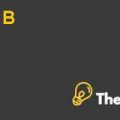
COMPANY BACKGROUND
Air Arabia was founded in early 2003, formed by the ruler of Sharjah and the Supreme council of United Arab Emirates. The company has expanded its operations over 51 countries with over 96 destinations all around the world. The major and popular destinations of the airline include Beirut, Colombo, Delhi, Istanbul, as well as Moscow. The company is well known for its low cost and has been named as Low Cost Carriers (LCC). The company owns over 2000 highly skilled and professionally trained employees bearing expertise and core experiences in certain areas. The company has earned the confidence and satisfaction of its customers by facilitating its customers with excellent quality services and exceptional customer care services. This has increased the overall reputation of the company among its customers as well as it has also increased the customer loyalty towards the brand. (ADCB Wealth Management Group, 2008)
Air Arabia was the first airline company to initiate the concept of low cost carrier in the Middle East and North Africa region. The company has been awarded as the second most popular airline in the world in 2012. Moreover, the company has made joint ventures with four international bases, which include Egypt, Jordan, Morocco, and Nepal. The joint ventures have enabled the company to further expand its business which would subsequently result in overall increase in the customer base of the company as well as the company would be able to capture a significant portion of market share in the entire industry.
MISSION OF THE COMPANY
The company has a mission of serving and facilitating its customers with excellent quality of services as well as unconditional customer care services, in order to secure a dominating position in the entire industry.
COMPETITIVE ANALYSIS
Air Arabia, through its unconditional and optimum quality professional and customer services, has become a trail blazer in the entire industry as well as the customer loyalty towards the company has enabled the company to secure a leading position in the entire market. Moreover, there is an immense competition in the airline industry; the major competitors of the company include Jazeera Airways, Emirates Airlines, Etihad Airways, and Air India Express. The competition in the entire aviation industry could be thoroughly analyzed by using porter five forces model (Shahin, 2007).
PORTER FIVE FORCES MODEL
Porter five forces model provides a firm framework to the user, in order to analyze the intensity of competition in the market. It determines the competition in the entire market by analyzing the results of intensity of five forces, namely, the barriers to new entrants, threats of substitutes, bargaining power of buyer, bargaining power of the supplier, and intensity of rivalry among the competitors in the industry. This model helps the management in identifying the position of the company in the entire market as well as it also provides the top management of the company a sound basis to draft their strategic decisions especially with respect to determining and enhancing competitiveness of the company. (E.porter, 2002)
PORTER FIVE FORCES ANALYSIS.
Porter five forces model is applied to Air Arabia, in order to analyze the competition in the entire industry.
THREAT OF NEW ENTRANTS
Air Arabia has secured a leading position in the low cost carrier industry as well as it has also secured one of the leading positions in the entire aviation in the industry. Moreover, the company has earned the confidence of its customers as well as the customers of the company show high brand loyalty towards the company. This makes Air Arabia less threatened from the new entrants in the entire industry. Although new entrants are motivated and attracted due to high profitability of the aviation industry but they show reluctance due to enormous establishment and operational costs, in order to setup a new business. Thus, there is a low threat of new entrants to the company.AIR ARABIA Case Solution
BARGAINING POWER OF SUPPLIER
There are very few suppliers of the raw materials for the aviation industry. The scarcity of suppliers in the entire industry provides an advantage to the suppliers to control over the prices of raw materials of the aviation industry. The company has to ultimately rely on the suppliers of the industry in order to get raw material, therefore, the company has to pay the same price as quoted by the supplier in the industry. This increases the cost of raw materials as the company is unable to bargain the raw material prices with the suppliers. This overall increases the competition in the entire market. Thus, the bargaining power of supplier is very high in the entire aviation industry in which the company is operating.................
This is just a sample partial case solution. Please place the order on the website to order your own originally done case solution.













